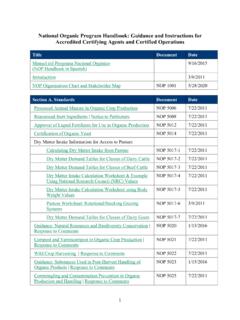Transcription of Theories of Peace - A Synthetic Approach to Peace Thinking ...
1 Theories OF Peace . A Synthetic Approach to Peace Thinking By Johan Galtung International Peace Research Institute, Oslo Oslo September, 1967. 2. To the memory of Julian Hochfeld 3. PREFACE. The present work is an effort to make a comprehensive and relatively exhaustive survey of Thinking about Peace . It has been carried out under a subcontract with the International Peace Research Association, Groningen, which was commissioned by the UNESCO to explore Peace Thinking , with particular emphasis on Peace Thinking after the Second World War; and is submitted to the UNESCO in partial fulfillment of that contract. In the first phase of this work a typology of " Peace Thinking ". was prepared by a study group at the International Peace Research Institute, Oslo, during the spring of 1966. Participants in the group were Fenna van den Burg, Groningen; Sverre Bergh Johansen, PRIO.
2 Smund Egge, PRIO; Ingrid Eide Galtung, PRIO; Johan Galtung, PRIO;. Helge Hveem, PRIO; Roman Jasica, Warszawa; and Naomi Shapiro, New York. Fenna van den Burg was supported by a grant from the Polemologisch Instituut in Groningen, Roman Jasica was at PRIO on a UNESCO fellowship and the Norwegian participants were supported by the Norwegian Council for Research in Science and the Humanities and the Norwegian Council for Research on Conflict and Peace . A first draft of the present work was then presented to a " Peace theory week" organized by the International Peace Research Institute, Oslo and the International Peace Research Association, Groningen December 12-17 1966 at PRIO, Oslo; with support from the UNESCO to permit scholars from Eastern Europe to participate. The extensive discussions were extremely useful as a basis for the written presentation, which was initiated when the author was working in Paris early 1967 under a grant from Ecole Pratique des Hautes Etudes.
3 Grateful acknowledgement for all the support received, directly or indirectly, is hereby expressed. The work is dedicated to the late Julian Hochfeld, as a small expression of gratitude and admiration. I met him as the Deputy Di- rector of the Department of Social Science in the UNESCO, particularly concerned with the development of Peace research; as a fellow Pugwash participant; as a colleague in the social sciences and as a friend. His wide experience, his dedication and above all his sincere concern for the human condition were tremendously stimulating. Few people meant so much personally for the establishment of Peace research in those first, very difficult years as Julian, and his premature death was a great shock and setback. I. know that the present work would not live up to his expectations, but very much hope that it can be improved in a direction he would have approved of.
4 Oslo, September 1967. Johan Galtung 4. NEW PREFACE. This work on Theories of Peace was done for the UNESCO 1966-67 under a contract with the International Peace Research Association. IPRA had been founded in 1964, Bert R hling, an international lawyer of world fame as a member of the Tokyo tribunal was the first Secretary General and the first General Conference was in Groningen, Netherlands, where he was professor, in 1965. UNESCO was most supportive in the whole process under the able director of social sciences, Julian Hochfeld. And my task was to present a report for the next conference in T llberg, Sweden, 1967. So I did. The last chapter on Entropy and the General Theory of Peace was that repor, later published in the Proceedings from the conference, and some years later in Essays in Peace Research, Vol. I, Copenhagen: Ejlers, 1975, ch.
5 2. Another point today a triviality was to highlight the multidisciplinary character of Peace research. The division into sub-, inter and supra- national Peace Thinking under lined how all social sciences are necessary and none is sufficient. Psychology and sociology are needed for subnational Peace Thinking , like political science and international studies (II, H-I- M; III, A-B-C), religion studies (II, J), International law II, K) and economics II, L) for inter- and supra-national Peace Thinking . Sometimes new was added: an effort towards a sociology of inter-state relations (II, A-G) treating states and the state system like sociologists treat groups and organizations in search for stable equilibria that also should be peaceful. What, then, happened to all the other chapters? Answer: nothing, till now. And why? Simply because to me all the rest had been raw material for the conceptualization that emerged while working on these Theories , the effort to explore the use of entropy/energy as an overriding Approach to Theories of Peace .
6 In this there were also a fatigue with standard Theories . That Peace Thinking was sub-, inter- and supernational was trite. The latter two was new, and it was not so obvious that for each theory highlighting a Peace factor there seems also to be a Peace theory based on the negation of that factor. However, that there are those who believe in military approaches, and consequently those who believe in the opposite, also had an air of the trivial. I wanted something new So the manuscript somehow was forgotten, the work having served its purpose as a basis for a theory at a level of complexity more adequate to the complexity of the subject, Peace . Forgotten things, however, have a tendency to turn up, announcing themselves, how about me? And some colleagues who will remain anonymous, had managed a peek. One of the arguments was that worse books have been written, it can still the light of the day after those long nights in files and boxes.
7 Where that unpublished MS was not alone, by the way. Its publication now coincides with the publication of another book, A theory of Peace , under a different, more human, umbrella: equality. The entropy perspective still has its place, among others, as a perspective, but not as overriding Approach . I want to express my gratitude to Dr. Ramon Jasica who worked as an assistant one the list of literature that served as a base; to John Curtin University in Perth, West Australia for scanning, and to Michael Kuur Sorensen for handling the final stages in the digital version. Nothing has been changed, for good, or for bad. Alfaz. July 2005 Johan Galtung 5. CONTENTS. 1. Peace AS AN END. Introduction 6. The history of Peace Thinking : a bird's eye view 8. The meanings of Peace 12. 2. MEANS-ENDS Thinking AND Peace . 2 1. The thinker- Thinking -reality triangle 19.
8 The structure of Peace Thinking 25. Some further explorations of the condition-consequence relation 33. Some further explorations of the total structure of means-ends Thinking 39. The relation to Peace thinkers 43. The relation to social reality 45. 3. A TYPOLOGY OF MEANS TO OBTAIN Peace . The selection of conditions of Peace 50. Some further explorations of the dissociative - associative axis 60. Some further explorations of the relation between means and ends 64. 4. THE SPECIAL Theories OF Peace . Introduction 67. Thirty-five Theories of Peace 70. Some basic assumptions in Peace Thinking 181. 5. ENTROPY AND THE GENERAL THEORY OF Peace . Introduction 186. The concept of entropy 186. Actor entropy and interaction entropy 189. Entropy and Peace Thinking 190. The non-distributive Peace factors 203. The dynamics of entropy 207. Conclusion 211.
9 Notes 214. Appendix 1: A typology of Peace Thinking 218. Appendix 2: Bibliography on Peace Thinking 219. 6. 1. Peace AS AN END. Introduction To write about Peace Thinking is to write about everything and nothing; it is neither precise nor sufficiently vague to be discarded completely as a subject of serious inquiry; the closer one approaches it the more does it recede - and it is frighteningly important. But this is in the nature of human affairs: the more important the matter, the vaguer and the more difficult becomes the Thinking about it - for if it had already been conquered intellectually and mastered technically, then it would no longer have been so important because it would no longer loom so high as a problem. Some other problem would have taken its place. Peace Thinking seems to be characterized by the following three properties: 1.
10 It is only rarely original, usually it has appeared before, in the Thinking of earlier generations, even centuries ago. 2. It is usually vague, confused and contradictory. 3. It is very often designed more to let " Peace " glorify certain means than to show how these means lead to Peace . The first of these alleged properties of Peace Thinking will be the subject, to some extent, of the next section which will give an historical survey of some types of Peace models; the second will be treated throughout the present monograph, and the third property will be dealt with briefly in this introduction. Peace seems to be an "umbrella concept", a general expression of human desires, of that which is good, that which is ultimately to be pursued. Mankind will always be heading for goals, some of them very concrete, some of them more abstract and diffuse, and " Peace " seems to be one of the terms that is used for this generalized goal.






